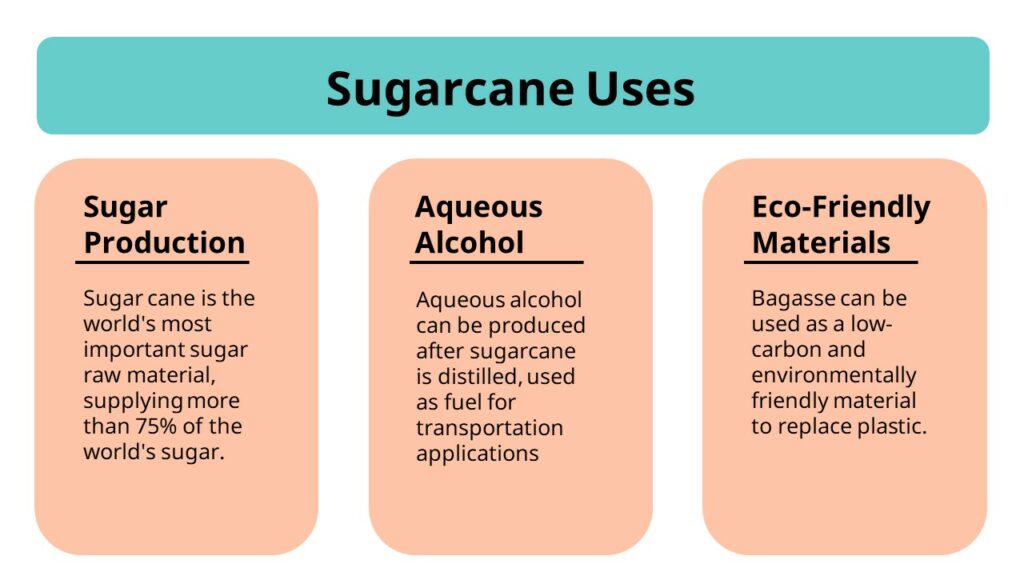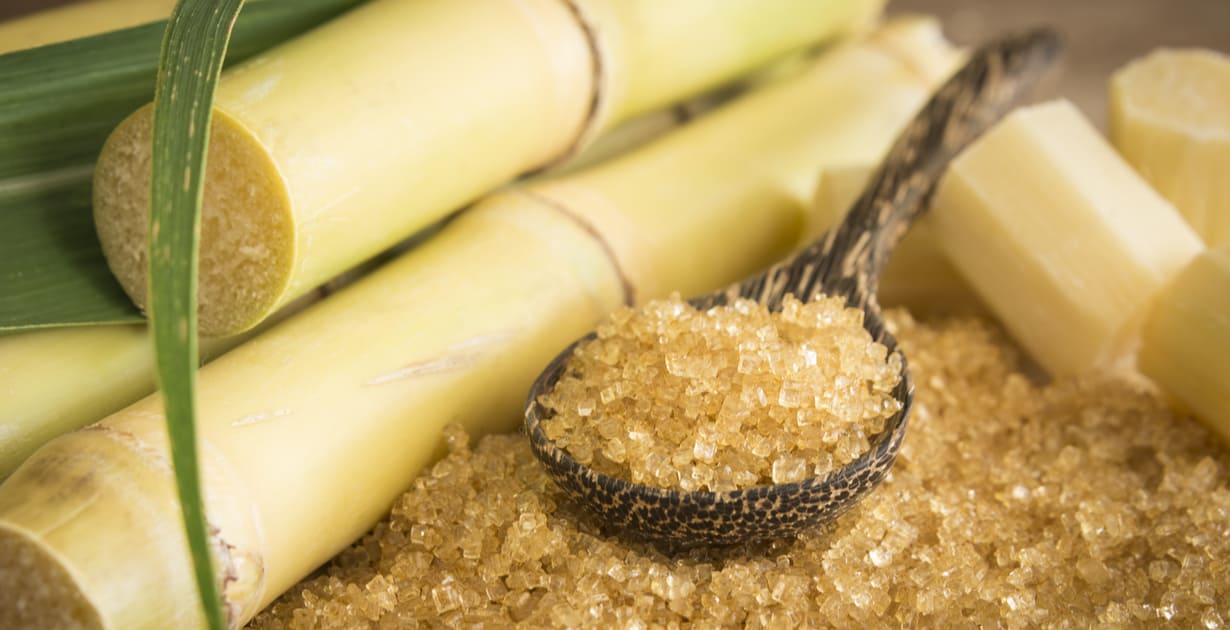Revealing the Importance of Sugar Canes: What Are Sugar Canes Used For in the Walking Cane Sugar Market?
Sugar walking canes act as the foundation of the cane sugar sector, largely supplying the raw material needed for sugar production. Their capacity to convert sunshine right into sucrose through photosynthesis is essential. Past their sweetening residential or commercial properties, sugar walking sticks locate energy in numerous culinary applications and emerging markets. The full degree of their effect extends beyond the cooking area. This conversation will discover the multifaceted functions of sugar canes in both sector and economy.
The Function of Sugar Canes in Sugar Production
Sugar canes offer as the foundational raw material in the cane sugar industry, playing an essential function in the manufacturing procedure. These tall, seasonal lawns prosper in subtropical and exotic climates, where they soak up sunlight and nutrients to produce sucrose. The harvesting of sugar canes normally occurs when the plants get to maturity, maximizing their sugar content.Once gathered, the walking sticks go through squashing to draw out the juice, which consists of dissolved sugars. This juice is then clarified and concentrated with evaporation, transforming it into a syrup. Subsequently, condensation occurs, permitting the separation of sugar crystals from the remaining syrup.The drawn out sugar undergoes more refining to achieve the wanted pureness and quality - What Are Sugar Canes Used For. Subsequently, the entire procedure highlights the vital contribution of sugar canes to sugar production, underscoring their significance as both a raw product and a stimulant in the production of walking cane sugar

Diverse Applications in Food and Drink Industry
In the food and drink industry, sugar walking stick serves multiple crucial functions. It acts not only as a primary sugar in various items however also as a flavor agent that boosts preference profiles. Additionally, its elements play a significant duty in fermentation and distillation processes, adding to the production of alcohols.
Sweetener in Products

The convenience of walking stick sugar as a sweetener makes it a staple in a broad range of food and drink items. Extensively used in baked products, it enhances the preference and structure of cakes, cookies, and breads by supplying dampness and promoting browning throughout cooking. In drinks, walking stick sugar is a preferred option for sweetening teas, juices, and soft drinks, allowing for a balanced flavor profile. In addition, it works as an essential component in dressings, marinates, and sauces, adding to an unified blend of tastes. Cane sugar's capacity to dissolve swiftly and its regular sweet taste account even more strengthen its duty as a recommended sweetener - What Are Sugar Canes Used For. Overall, its varied applications underscore the important duty of walking cane sugar in the culinary landscape
Seasoning Representative Usage
Making use of cane sugar as a flavoring agent prolongs beyond its role as a simple sweetener, improving a selection of cooking creations. In the food and drink industry, it improves taste profiles by balancing acidity and resentment, making it a necessary part in dressings, marinates, and sauces. In addition, walking stick sugar adds to the total mouthfeel, giving a pleasurable structure in baked goods and confections. Its caramelization throughout cooking includes depth to both tasty and wonderful dishes, while likewise serving as a chemical in jellies and jams. Moreover, in beverages, walking stick sugar is employed to enhance flavors in alcoholic drinks and sodas, ensuring a more enjoyable drinking experience. This flexibility highlights its significance in varied culinary applications.
Fermentation and Purification
Cane sugar plays a considerable function in fermentation and purification processes, which are vital in generating a selection of liquors and food. Throughout fermentation, yeast transforms sugars into alcohol and co2, an essential action in crafting drinks like rum and vodka. Distillation better detoxifies these alcoholic mixtures, increasing and focusing flavors alcohol content. Past drinks, walking stick sugar is additionally important in creating vinegar and specific artificial additive with fermentation. The versatility of walking stick sugar improves the flavor profiles and top quality of these items, making it essential in the food and beverage industry. Its contribution not only supports conventional approaches but also promotes advancement in crafting new flavors and experiences for customers.
Sugar Canes in Biofuel Production
As passion in renewable resource sources grows, sugar canes are significantly identified for their capacity in biofuel production. The biomass originated from sugar walking sticks can be transformed right into ethanol, a sustainable fuel option that lowers greenhouse gas discharges compared to nonrenewable fuel sources. This process usually entails fermenting the sugar extracted from the cane, which is then distilled to produce high-purity ethanol suitable for usage in vehicles.Additionally, sugar walking cane bagasse, the fibrous deposit left after juice extraction, can be used as a feedstock for bioenergy. It can be shed to generate vapor and electrical energy, adding to energy self-sufficiency in sugar mills. Countries such as Brazil have effectively integrated sugar cane biofuel into their energy policies, bring about decreased reliance on imported gas - What Are Sugar Canes Used For. On the whole, sugar walking sticks represent an appealing opportunity for biofuel production, aligning farming experiment environmental sustainability goals
Industrial Uses of Sugar Canes
While typically acknowledged primarily for sugar production, sugar walking canes also have varied industrial applications that prolong well beyond the food industry. The fibrous results of sugar walking stick, referred to as bagasse, serve as a useful resource in numerous industries. Bagasse is generally utilized as a biofuel, creating energy in sugar mills and other centers. Furthermore, it can be processed into paper, cardboard, and eco-friendly products, promoting lasting practices.In addition, sugar canes add to the production of molasses, a byproduct made use of in the fermentation procedure for creating alcohol and yeast. This adaptability makes sugar walking canes integral to the beverage and pharmaceutical industries. Sugar cane extracts are employed in the cosmetics market, giving all-natural active ingredients for skin care and appeal products. Generally, the commercial uses sugar walking canes highlight their relevance beyond sugar, showcasing their duty in advertising sustainability and sustaining numerous industries.
Economic Effect of Sugar Cane Growing
The economic impact of sugar walking cane cultivation is significant, primarily via job creation and export revenue generation. This industry not only provides job opportunity in rural locations however additionally contributes substantially to nationwide economic situations by means of exports. Recognizing these aspects highlights the important duty sugar walking stick plays in both global and regional markets.
Task Development Opportunities
Usually overlooked, the sugar walking cane industry plays an essential duty in work production, substantially influencing neighborhood economic situations. The growing, harvesting, and handling of sugar cane produce many employment possibility, from area employees to manufacturing facility personnel. In numerous areas, these tasks offer livelihoods for thousands of families, adding to community security and development. Furthermore, ancillary markets more tips here such as transport, devices production, and retail take advantage of the sugar walking cane market, further expanding work options. Seasonal job throughout growing and harvest times additionally sustains short-lived positions, permitting employees to make earnings in or else lean durations. In general, the sugar cane industry functions as a critical economic engine, fostering job Visit Your URL development and improving the top quality of life for numerous people and areas.
Export Profits Generation

Lasting Practices in Sugar Walking Cane Farming
While typical sugar walking cane farming practices have often led to environmental degradation, a growing variety of farmers are taking on sustainable methods that focus on ecological balance. These methods consist of plant rotation, which improves soil fertility and decreases parasite outbreaks, and using organic fertilizers to lessen chemical overflow. Additionally, some farmers are implementing incorporated insect administration techniques, which concentrate on making use of all-natural killers and biopesticides instead of hazardous chemicals.Water preservation strategies, such as drip watering, are also getting traction, enabling effective water usage while keeping crop health and wellness. Moreover, several farmers are spending in eco-friendly energy sources, such as biomass from sugar walking stick waste, to power operations and minimize their carbon impact. These sustainable practices not just secure ecological communities however also enhance the long-term stability of sugar cane farming, guaranteeing that it can proceed to satisfy worldwide sugar needs while reducing ecological influence.
Frequently Asked Concerns
Exactly How Are Sugar Canes Harvested and Processed?
Sugar canes are harvested using mechanical cutters or manual techniques, then transported to manufacturing facilities. There, they undergo washing, crushing, and extraction processes to get juice, which is then clarified, evaporated, and taken shape right into sugar.
What Is the Nutritional Worth of Sugar Walking Stick?
The nutritional value of sugar cane consists of carbohydrates, primarily in the form of sucrose, together with trace quantities of vitamins and minerals like calcium and potassium. It is low in protein and fat web content on the whole.
Can Sugar Walking Stick Be Expanded in Non-Tropical Regions?
Sugar walking cane can be expanded in non-tropical areas, however it needs specific conditions such as adequate heat, dampness, and ideal dirt. Adjustment and farming techniques are important for effective growth outside typical tropical environments.
What Illness and insects Affect Sugar Walking Cane Crops?
Illness and parasites substantially impact sugar walking stick crops. Usual threats consist of the sugarcane borer, red rot, and mosaic infection, which can decrease return and top quality, demanding reliable monitoring methods to shield these necessary farming resources.
How Does Sugar Cane Farming Influence Citizen Communities?
Sugar cane farming substantially influences local areas by giving job opportunity, promoting financial development, and sustaining regional services. It can additionally lead to social challenges and environmental worries, affecting area health and wellness and sustainability. Sugar walking sticks offer as the foundation of the walking cane sugar sector, primarily supplying the raw material needed for sugar production. Sugar canes offer as the fundamental raw material in the cane sugar sector, playing a crucial function in the production process. The harvesting of sugar walking sticks usually happens when the plants reach maturation, optimizing their sugar content.Once gathered, the walking canes go through squashing to remove the juice, which has dissolved sugars. While often identified primarily for sugar manufacturing, sugar walking canes also have varied industrial applications that expand well past the food industry. As international need for sugar proceeds to climb, countries abundant in sugar walking check out here stick sources capitalize on this possibility, exporting raw sugar and refined items to worldwide markets.